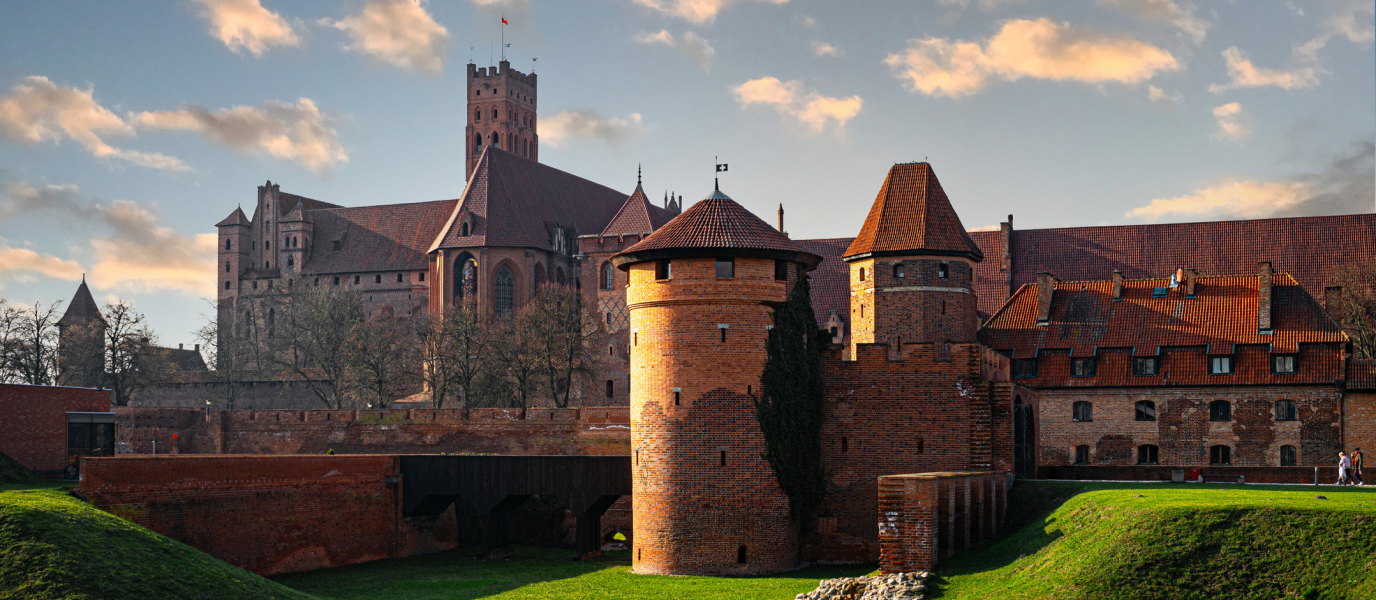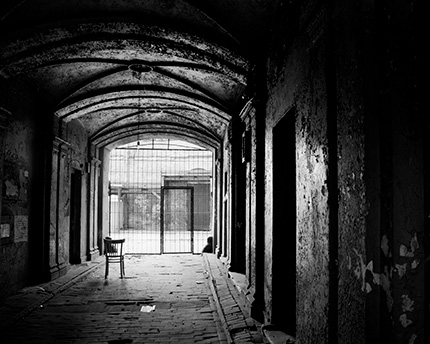Three and a half hours’ drive south from Warsaw situated on the banks of the Vistula River lies Kraków, one of Europe’s top destinations because of its beauty and history. It was Poland’s capital for over 500 years.
Unlike Warsaw, the city of Kraków retained much of its historical and architectural heritage after World War II. It was a member of the General Government of Nazi Germany. Its former Jewish ghetto is a reminder of one of the darkest episodes in recent history.
In addition to its historic centre, which was declared a UNESCO World Heritage Site in 1978, Kraków is a vibrant city with a lively atmosphere both day and night. A destination accessible by air from Spain with cheap flights that takes two or three days to explore slowly but steadily.
- Market Square
- St. Mary’s Basilica
- Tower of the old town hall
- Wawel Castle
- Kraków’s Jewish Quarter
- Collegium Maius
- Where to eat in Kraków
- How to get there from Warsaw
- Where to stay in Warsaw
Market Square
Kraków’s Market Square, located in the heart of the Polish city in the Old Town, is the largest medieval square in Europe. It dates back to the 13th century and covers an area of 40,000 square metres.
For years, it was used as a parade ground, but since then has mainly been used for commercial purposes. In the past it also hosted public executions and royal ceremonies and, during the Nazi occupation, it was renamed Adolf Hitler Platz.
The Cloth Hall or Sukiennice is the building that stands out from the rest because of its central location, the beauty of its Renaissance style, and its scale. It was first built in the 14th century, then destroyed and rebuilt throughout history until it took its present form in the 19th century. In the past, merchants used to sell their wares here; today, tourists can buy handicrafts or browse one of the museum collections it houses.
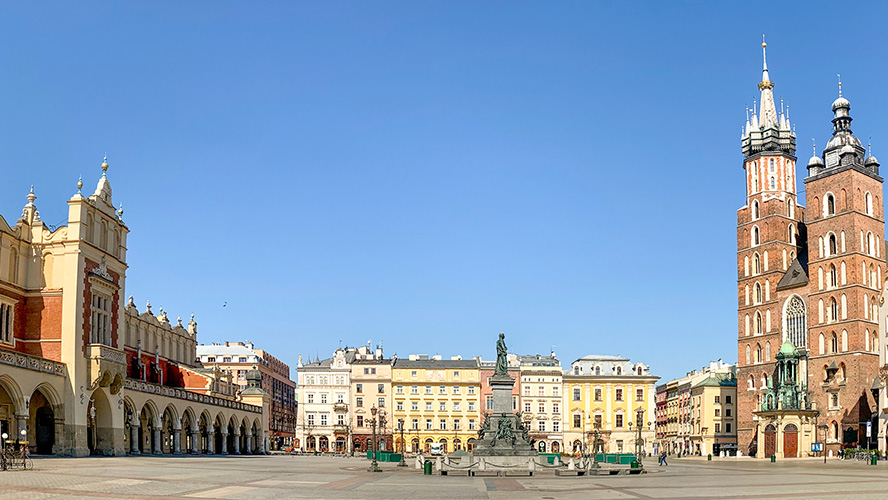
Alongside the Basilica of St. Mary, which houses the largest Gothic altarpiece in the world, the church of St. Adalbert and the Old Town Hall Tower are the other two major historic buildings of note. A statue of the Polish poet Adam Mickiewicz, a pioneer of Polish Romanticism, is another of icons you can see in the square.
Today, this square is a place filled with people and a bustling atmosphere at all hours sightseeing or having a drink on one of its terraces, with the locals coming and going throughout the day.
St. Mary’s Basilica
This is probably the most iconic church in Poland. Although consecrated in 1320, St. Mary’s Basilica, declared a basilica in 1970, was built on the foundation of an earlier church that was destroyed by the Mongols in the 13th century.
Gothic in style, it stands out for its brick construction and its two towers, which are striking because of their difference in height. Its rich and ornate interior is most notable for housing the world’s largest Gothic wooden altarpiece by the German artist Veit Stoss.
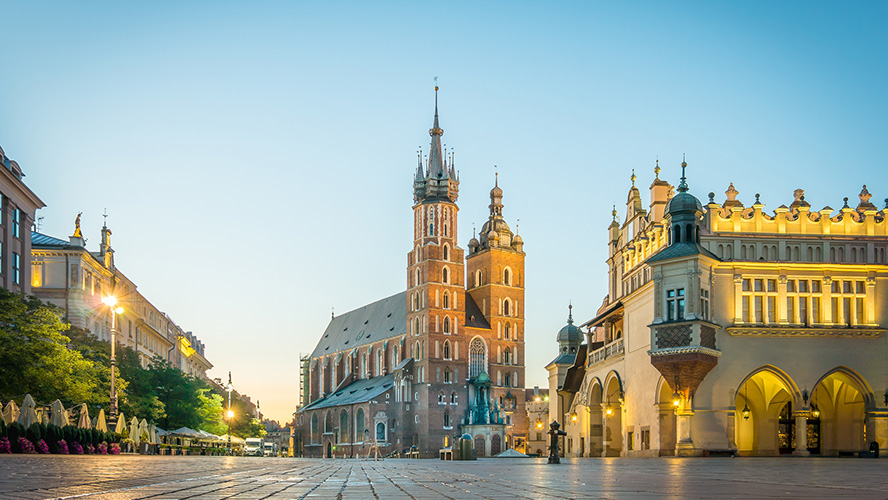
You might hear a trumpet as you admire the exterior façade of the basilica. From one of the towers, a trumpeter plays a traditional Polish melody (the hejnal mariacki) every hour. It’s a tradition that serves as a tribute to a trumpeter who was killed by an arrow shot to the throat in the 13th century while playing the trumpet to warn of the Mongol invasion.
Tower of the old town hall
Another iconic building on Kraków’s Market Square is the tower of the Polish city’s old town hall. It was the only thing that remained after the demolition of the old town hall in 1820 so that the most important square of the Polish city could be expanded.
The tower was built at the end of the 13th century, is 70 metres high and leans slightly (some 55 centimetres) as a result of a severe storm in the 18th century. During the Middle Ages, there were dungeons and a torture room; today, this space houses a theatre.
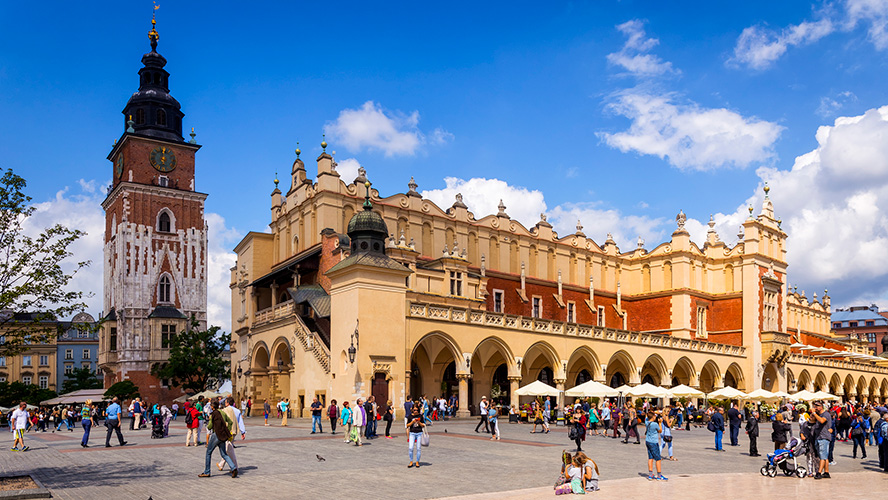
The tower is open to visitors. A pair of stone lions greet you from the entrance gate. You then have to climb over 100 steps to see inside. There are remarkable Gothic features on the first floor. Above, you can see the machinery of the old city clock and some historical photographs of Kraków. There’s a fantastic view of the Market Square through the small windows.
Wawel Castle
Situated on a hill, Wawel Castle is one of the most important historical sites in Poland, having been the residence of kings for centuries until the capital was moved to Warsaw.
This beautiful and immense fortress was built in the 14th century, during the reign of Casimir III the Great. It has Romanesque and Gothic elements. In World War II, it was occupied by the Nazis and suffered damage. Reconstruction and restoration work has been carried out since the 1960s.
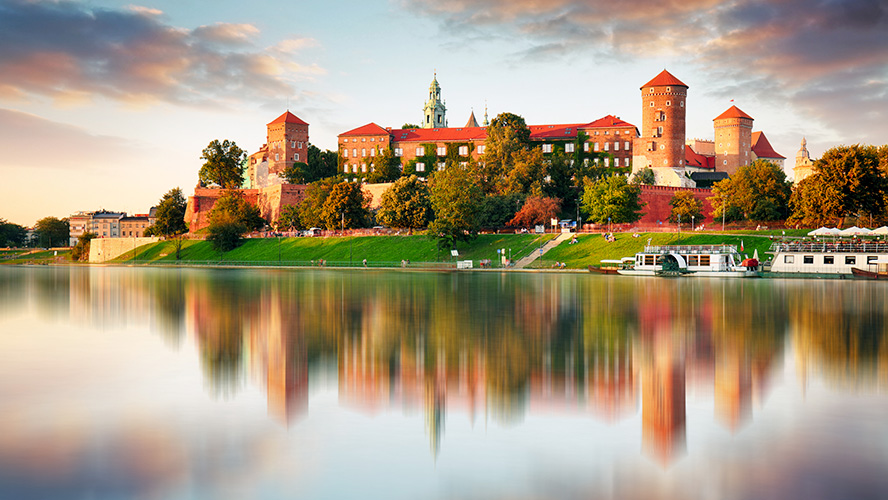
Perhaps the most striking feature of the interior is the Treasury of the Crown, which is housed in ancient 15th-century Gothic rooms. Despite the passing of time and the looting that took place, historical memorabilia relating to the kings of Poland can still be found here.
On the hill that gives its name to the castle, you can also find the Wawel Cathedral, built in the 11th century and where Polish kings were crowned and buried, or the Dragon Cave, a legendary grotto with tunnels almost 300 metres long that reach the Vistula River, where there is a sculpture of a dragon.
Kraków’s Jewish Quarter
Founded in 1335, what is known today as the Jewish quarter of Kraków was once an independent city. Today it is a decadent but engrossing and vibrant place to shop, dine, and drink, and is full of references to Jewish Holocaust of World War II.
Also known as Kazimierz, it was home to thousands of Jews who during the German invasion in World War II were transferred to the ghetto in the Podgórze area. They were then deported to camps such as Auschwitz. The Ghetto Heroes’ Square commemorates the 70,000 Jews who were deported to extermination camps with an installation featuring 70 chairs. It is worth pointing out that director Steven Spielberg filmed scenes from Schindler’s List here.
To soak up the atmosphere, visit synagogues such as the Isaac synagogue, the Remuh cemetery (one of the oldest in Poland), walk along the popular Szeroka Street, where there is a statue paying homage to the hero of the Polish resistance Jan Karski.
Collegium Maius
The Collegium Maius belongs to the Jagiellonian University in Kraków, which was founded in 1364 and where historical figures such as Nicolaus Copernicus and Pope John Paul II studied. The Collegium Maius (Latin for “Great College”) is the oldest building of the university and is located on the corner of the streets of ulica Jagiellońska and ulica Świętej Anny.
At the end of the 15th century, professors lived and worked here, giving classes and lectures. Its courtyard still preserves an old clock from which wooden figures emerge every two hours to the sound of a melody.
It’s home to a museum that you can visit to see historical objects used for lessons on anatomy, cartography, and astronomy, among other subjects. It also preserves a Globus Jagellonicus, which is one of the oldest globes in the world.
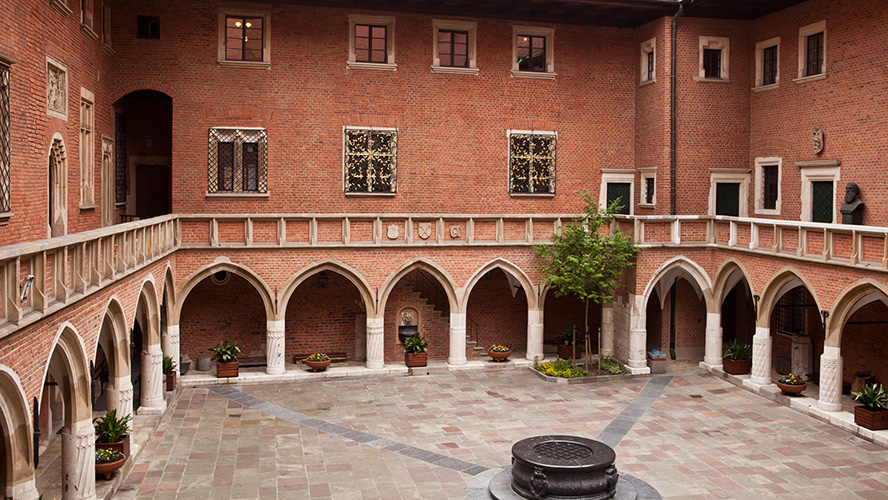
Where to eat in Kraków
For traditional Polish food, such as a good soup (in Kraków the most typical one is biały barszcz), pierogi (a kind of dumpling filled with cheese and potato), or cakes such as torcik piszyngier (a chocolate wafer cake sometimes soaked in alcohol), Kraków offers many options, from the traditional to the more modern.
Traditional options include street stalls near the market square or in the Jewish quarter, or milk bars, which are former communist-era traditional eateries.
For lunch or dinner, the Jewish Quarter or the Old Town also offers a wide range of restaurants. Here are a few examples: if you’re looking for a quiet space, the restaurant Klimaty Południa (SW. Gertrudy 5) is one option; for traditional Polish food, a well-known restaurant is Pod Baranem (Świętej Gertrudy 21); and if you want to treat yourself to a good dinner, Kraków has a Michelin-starred restaurant: Bottiglieria 1881 (ul. Bocheńska 5).
How to get there from Warsaw
You can get to Kraków from Warsaw by car, train, bus, or plane. By road, the journey takes about three and a half hours (around 300 kilometres). It is a two-and-a-quarter-hour journey by train and by plane it takes just over 50 minutes.
There are a wide range of departure times available by bus or plane and less so by train.
Where to stay in Warsaw
If you want to spend a few days of rest and comfort in Warsaw, the Barceló Warsaw Powiśle hotel is a good choice. There are many connections to Kraków and back within the day.
This new four-star hotel is located in the former Powiśle power station in the district of the same name, with the Centrum Nauki Kopernik metro station 50 metres away. Its aesthetics and interior and exterior architecture offer guests a unique, industrial atmosphere. Large pipes and control units are elements that combine the old with the new.
It has 151 rooms, a restaurant with a wide range of cuisine on offer, a sky bar with an outdoor swimming pool on the fifth floor, meeting and event rooms, and even a gym.

























































